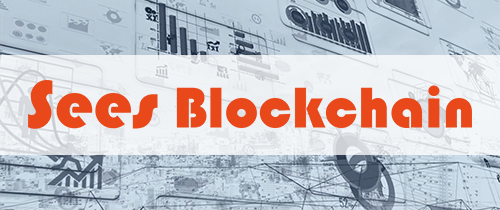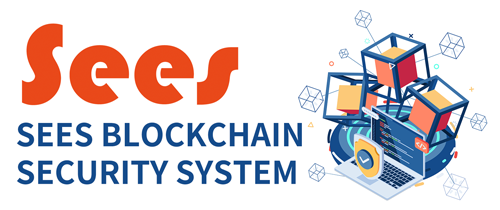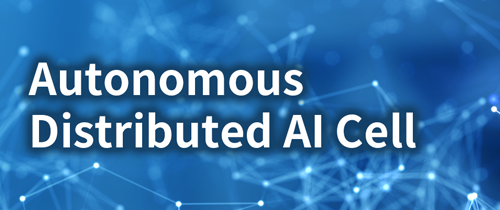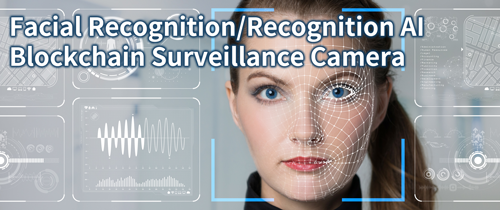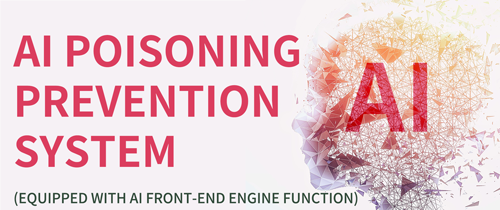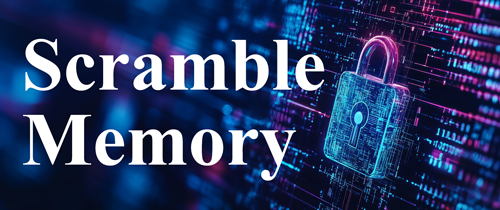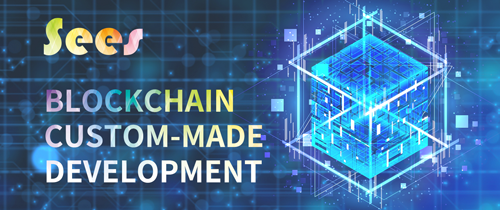Autonomous Decentralized AI Cell
Sees Corporation has docked its proprietary autonomous decentralized AI to the Sees Enterprise blockchain and created an Autonomous decentralized AI cell, which is an artificial neuron contained in a single chip.
Autonomous Distributed AI Cell is a unique technology that enables unmanned operation of factories and unmanned monitoring and management of various facilities. When shipped from the factory, it does not need to be individually set up according to the sensors and installation environment, but the moment it is installed, it autonomously senses the surrounding environment and learns various elements through operation. It is a composite chip that behaves exactly like an artificial neuron.
Blockchain is the synaptic equivalent of a neurotransmission pathway, guaranteeing the transmission of data and enabling decentralized processing. In addition to the artificial neuron function, the blockchain is composed of a highly distinctive advanced logic that includes the function of the autonomic nervous system, which is the cerebellum, as well as the audiovisual cells for autonomous control.
SPEC
Autonomous Decentralized AI Cell
Specification Overview

❶SiP for blockchain node/Hashchain
MPU(Micro Processing Unit)
|
STMicroelectronics STM32MP15x
|
|---|---|
| Memory | 1GB DDR3L |
| PMIC | STPMIC1 Power Management IC |
| ROM | 4KB Non-Volatile EEPROM |
| Oscillator | MEMS Oscillator |
| Size | 18mm×18mm |
❷Edge TPU for autonomous distributed AI
| Chip set | Google Edge TPU and PMIC |
|---|---|
| Serial interface | PCIe Gen 2 or USB 2.0 |
| Size | 15mm×10mm×1.5mm |
❸Wi-Fi/Bluetooh Module
| Chip set | QCA6174A |
|---|---|
| Wi-Fi | 2.4GHz & 5GHz Wi-Fi |
| Bluetooth | 5.0 BR/EDR/LE |
| Size | 11mm×8.8mm×1.15mm |
❹Encrypted Authentication IC
| Encryption/Decryption | ECDH (Elliptic Curve Diffie-Hellman) |
|---|---|
| Signature/Verification Authentication | ECDSA (Elliptic Curve Digital Signature Algorithm) |
| Size | 2mm×3mm×0.6mm |
USE CASE
Autonomous Decentralized AI Cell
Use case
One of the most useful applications of Autonomous Distributed AI Cells is the unmanned control and monitoring of premises (factories, hospitals, condominiums, etc.). Until now, the software in the central control unit has centrally detected, determined, and output alarms based on sensor data from various types of equipment (manufacturing robots, room temperature control, lighting control, etc.) used in the premises in order to detect and predict malfunctions based on their operating status.
However, when data is sent from many sensors at once in the event of an accident, the central monitoring system processes the data sequentially, so it takes a considerable amount of time before alarms are output to humans or fire sprinklers are used to extinguish the fire, which can lead to a major disaster due to delayed response.
By using the Autonomous Distributed AI Cell, when an abnormality is detected, it notifies the central controller, and at the same time, it makes individual judgments and instantly takes action based on the knowledge it has gained through past autonomous learning, thereby preventing major accidents from occurring.
In addition, Autonomous distributed AI cell can cooperate with each other to handle various anomalies through simultaneous distributed processing.
By integrating a digital video camera module with a built-in microphone into the autonomous decentralized AI cell, its functionality can be enhanced into an autonomous decentralized AI audiovisual cell. With video input from the camera and audio input from the microphone, more advanced autonomous decentralized control and monitoring can be achieved.

LOGIC
Autonomous Decentralized AI Cell
Special Logic
Autonomous Distributed AI Cell incorporates special logic to make it autonomous.
- Individual Establishment Logic
- For example, some motors vibrate at 1000 rpm (revolutions per minute) and overheat abnormally, while others rotate normally even at 2000 rpm. The "Autonomous distributed AI cell" installed in each motor learns the individual characteristics of the motor it manages and sets a limiter to determine what is the normal line.
- Comparative learning logic for others
- "Autonomous distributed AI cell" share data with other "Autonomous distributed AI cell" to understand how the devices they manage are unique compared to other devices.
- Verbal Consciousness and Intention Logic
- "Autonomous Distributed AI Cell" simultaneously outputs human verbal information such as consciousness and intention, in addition to the usual sensor output digital data. For example, "It is a little hot" or "I feel a lot of vibration." This linguistic information can be directly connected to the existing linguistic input type AI to convey intentions and ask it to think and decide.
- Self-correcting logic
- Unlike ordinary monitoring systems, the "Autonomous Decentralized AI Cell" does not need to seek the judgment of the central monitoring system, but rather uses its own judgment to take action to output an alarm or extinguish a fire using localized sprinklers, etc., if the situation is dangerous enough to warrant urgent action.
- Ethical logic
- The off-premises higher-level servers and edge servers educate each "autonomous distributed AI cell" while making total predictions and judgments. (e.g., correction of output language information)
- Self-positioning logic
- By attaching GPS and altitude sensors to each "autonomous distributed AI cell," it is possible not only to notify the host server of the location where it is installed and the location/device where an abnormality is detected on a 3D map, but also to identify and grasp the location by itself.
- Re-education Logic
- Periodically poll the "Autonomous Distributed AI Cell" to create a 3D map based on normal operation availability, location movement, status, etc., and constantly update the version. This allows the system to autonomously update its latest position and role without the need for human configuration.

APPLICATION
Autonomous Decentralized AI Cell
Predictive Maintenance Applications
Autonomous Decentralized AI Cellcan be integrated into predictive maintenance systems across production lines and entire factories. For example, by analyzing differences in task execution for each robotic arm, anomaly detection models can be individually optimized, enabling more accurate failure prediction.

Back to Top

